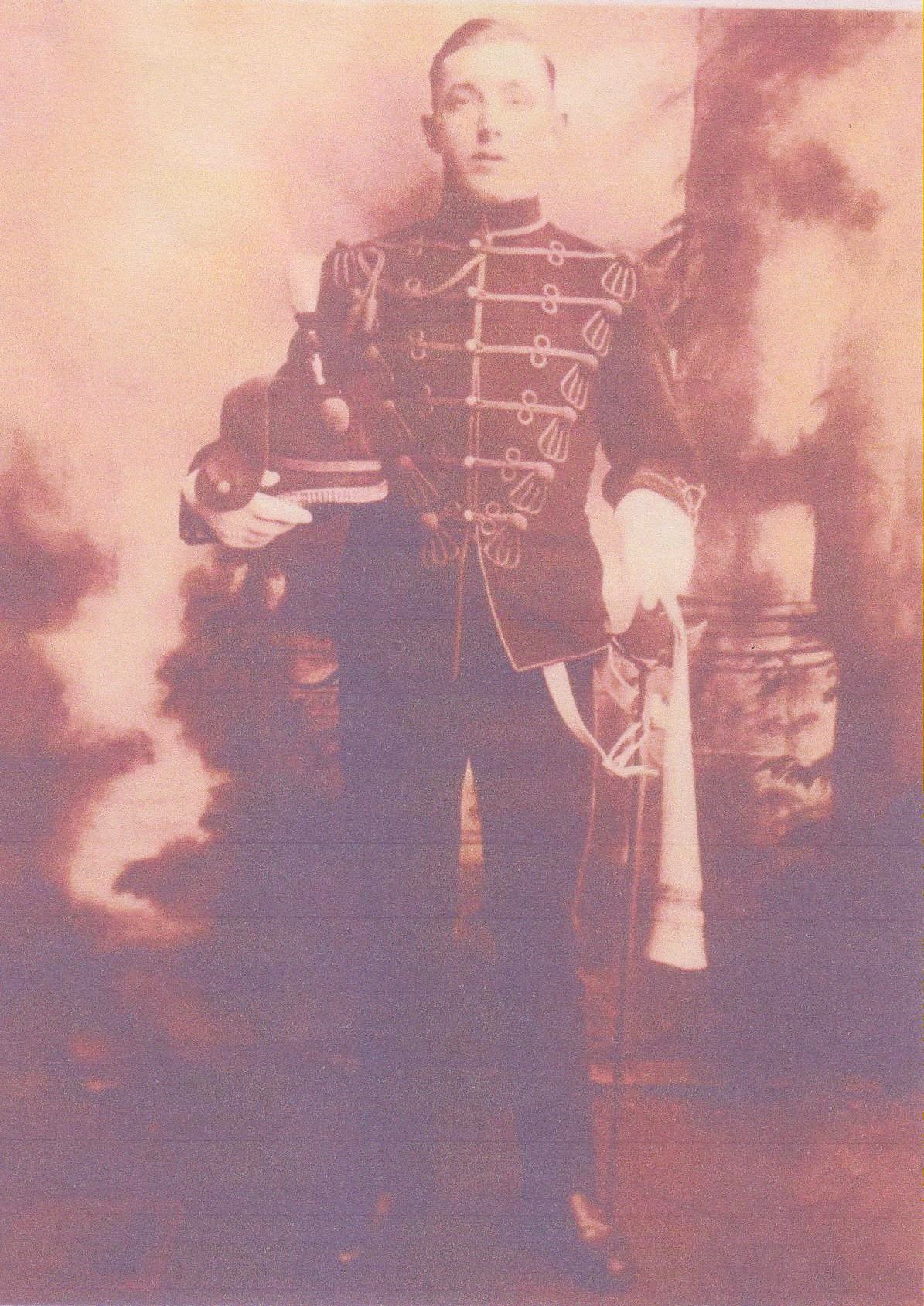
Robin Snook submitted this information about his grandfather, Charles Tweedy.
113319 Driver Charles Tweedy served with the Royal Horse Artillery. He signed up on 29th October 1915 in Richmond and spent time at the North Training Camp at Ripon. He fought in France and at one point the horse that he was riding was blown from underneath him. He was lucky though and survived to fight another day. The horse’s bit is still in the family to this day.

Part of Charles’ service record showing some of his postings and hospitalisation
Explore more memories from the ribbon
-
William Bowman
Not much is known about the service of Sergeant William Bowman of the Yorkshire Regiment. However, Stuart Hodgson a volunteer at the Green Howards Museum noticed something slightly unusual when he came across a photograph of William. The second button on his tunic is covered in black material. There is a good deal of evidence which suggests that some soldiers who had lost relatives during the war started wearing a black button on their tunic, or sometimes a button wrapped in black crepe. This was probably an un-official practice and a blind eye was turned. However, evidence in an Eastern Command Order (1593) of August 1918 states: “Mourning wearing of, by Non-Commissioned Officers and men. The practice by Non-Commissioned Officers and men of covering the second button of the service dress jacket with black material as a symbol of mourning is irregular and will cease forthwith. (War Office Letter No. 54/ Gen No./3025 (QMG 7) dated 19th July 1918)” We do not know who was being mourned, but it appears that William Bowman survived the Great War.
-
Catherine Walls
Valerie Slater of Coverdale provided this story about her grandmother, Catherine Walls – a happy and unusual tale wherein all 5 of her sons survived the Great War. In 1883, Catherine Louisa Polden, then living in Dorset set eyes on George Walls for the first time. It was love at first sight. George was twenty years older than Catherine and arranged the wedding with all haste – the marriage by licence took place at Hampreston near Wimborne. Catherine left the county of her birth, never to return. After journeying north, Catherine and George made their home in Carlton at Coverdale Cottage. The couple had three daughters and five sons born between 1886 and 1898. George died in 1908 so Catherine had to face the anxious war years supported by her daughters. She was a religious woman, so her faith combined with her respected and busy life as unofficial midwife in the village helped her to get through. Her prayers were answered. William Walls (born 1898) served in the Machine Gun Corps; George (born 1889) was with 21st Kings Royal Rifles, being wounded by shrapnel at the Battle of Flers-Courcelet on 17 September 1916; Alfred (born 1891) served in the Army Service Corps and then the Loyal North Lancashire Regiment, he was hospitalised twice (the second occasion being the result of a gas attack); Joe (born 1896) enlisted with the King’s Royal Rifle Corps with his brother Dick. Joe was discharged from the army in November of 1916 due to ill…
-
William Helmsley
William was born in 1897 in the village of Thoralby, near Aysgarth, in the North Yorkshire Dales. Birth registrations show he was born in the first quarter of that year. He was the youngest son of farmer John and his wife Alice, living at Town Head Farm. The 1901 census shows he had two older brothers, Ralph 10 and John Hunter 7, and a sister Elizabeth 9. However, the 1911 census only shows William, and by that time his mother was a widow at 42. Also at the time, three boarders lodged at the farm. William attended the local school and in his teens became a valued member of Aysgarth Amateur Dramatic Society. At the outbreak of war, aged 17, he enlisted in the 10th Battalion Yorkshire Regiment. He went to France in October 1915. By the onset of the 3rd Battle of Ypres in 1917 William was now a Corporal. It was during this offensive on the 3rd October that the 10th Battalion was involved in an action on Broodseinde ridge. It was during the heavy shelling on the 4th that William was killed. His body was never found. William is commemorated on a panel at the Tyne Cot Cemetery. He was just 19 years of age when he died.
